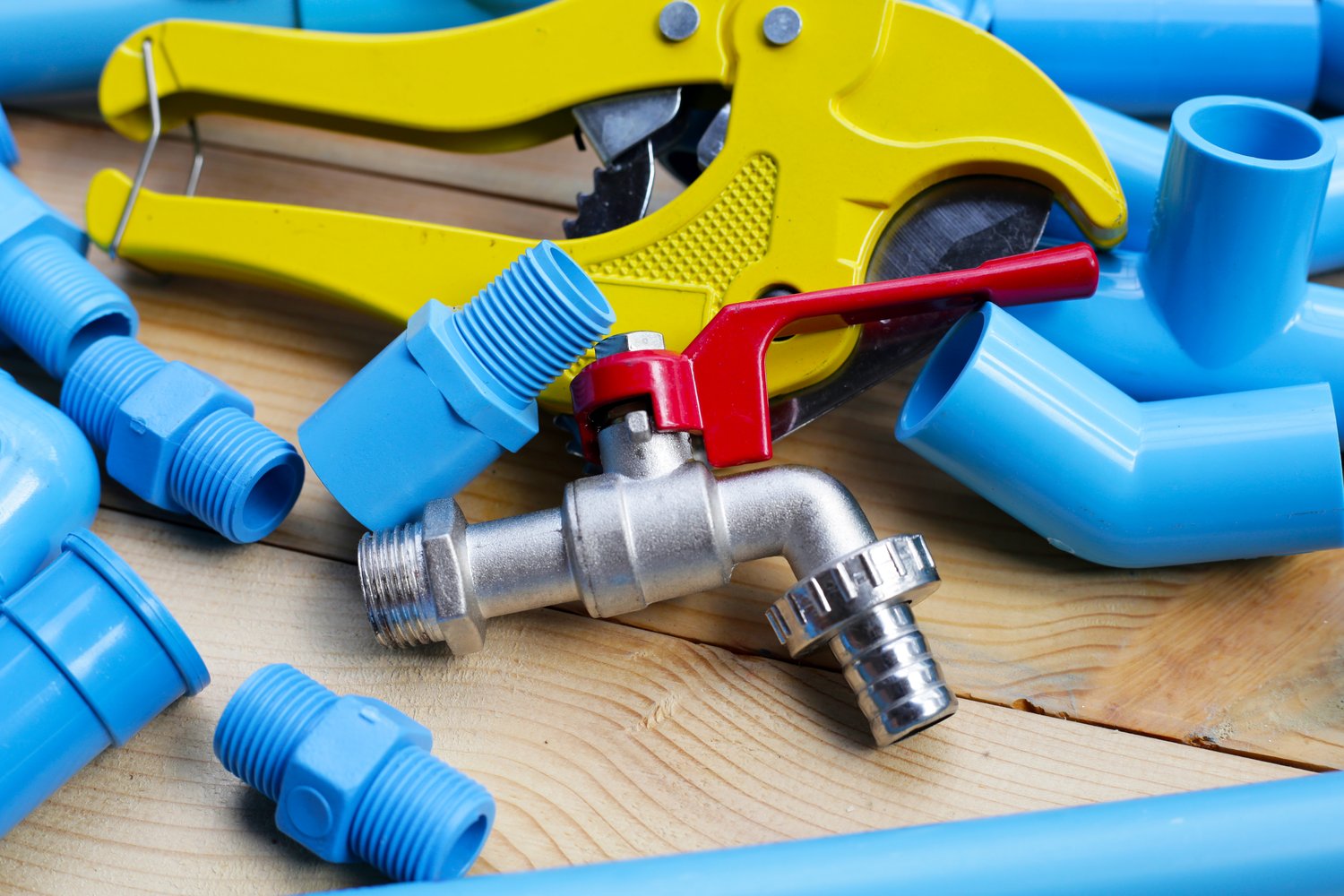Choosing the right piping for a home repiping project can significantly alter your home’s plumbing efficiency and longevity. In the realm of DIY projects, the debate between PEX and copper plumbing remains a hot topic. Both materials offer unique advantages, but understanding their distinctions is key to making a well-informed decision that could save you time and money.
- Explore the essentials: Get to know the fundamental differences in durability, cost, and application between PEX and copper plumbing.
- Why copper stands out: Discover the specific benefits of copper pipes, such as their remarkable longevity and ability to withstand extreme temperatures.
- Installation insights: Learn the DIY installation processes for both materials, inclusive of tools, skill levels, and potential installation challenges.
- Cost considerations: Delve into the cost analysis, comparing the initial and long-term expenses associated with PEX and copper plumbing.
With an understanding of these key points, you’ll gain valuable insights that can guide you toward the most suitable choice for your home plumbing project. Dive deeper into the article and empower yourself with knowledge that can optimize your DIY efforts for efficient and sustainable plumbing solutions.
Exploring the Basics: PEX vs. Copper Plumbing in Home Repiping Projects
Choosing the right plumbing materials for home repiping projects is crucial to ensure durability, cost-effectiveness, and ease of installation. Two popular options are PEX and copper plumbing, each with its unique properties and benefits.
PEX Plumbing: PEX, or cross-linked polyethylene, is a flexible and durable material that has gained popularity in residential plumbing. Known for its ease of installation, PEX can weave through walls and around obstacles without needing extensive fittings. This feature makes it ideal for DIY enthusiasts looking to tackle home repiping projects.
Copper Plumbing: On the other hand, copper pipes have been a staple in plumbing for decades. They offer exceptional durability and are often chosen for their traditional and reliable nature. Copper is known for its resistance to leaks and ability to withstand extreme temperatures, making it suitable for a variety of climates and home constructions.
When considering material costs, PEX plumbing typically comes out as the more affordable choice compared to copper. However, the suitability of each material will depend on the specific needs and budget of your home repiping project. Factors to consider include your local climate, water quality, and the level of plumbing expertise available for installation.
Advantages of Copper Plumbing in Comparison to PEX
Copper plumbing offers several distinct advantages when compared to PEX, particularly in terms of longevity and performance.
Longevity: Copper pipes are renowned for their robustness and longevity. They can last several decades without significant wear and tear, making them a long-term investment for homeowners. Unlike PEX, which may degrade under certain conditions, copper retains its structural integrity over time.
Temperature Resistance: Copper’s resistance to extreme temperatures is a significant advantage. It can handle both hot and cold water supply consistently without warping or becoming brittle, which can be a concern with some PEX installations in extreme temperatures.
While copper plumbing is generally more expensive than PEX, the cost may be justified by its reliability and performance. Copper’s natural resistance to bacterial growth and its acceptance by building codes further enhance its appeal as a plumbing material.
Overall, the decision between copper and PEX will rely on balancing these benefits against the costs and specific needs of your home plumbing system.
Installation Considerations for PEX vs. Copper Plumbing in Residential Settings
When planning a DIY home repiping project, understanding the installation considerations for PEX and copper plumbing is crucial. These plumbing materials have distinct installation processes that influence both the project’s complexity and the tools required.
Installing PEX plumbing is generally favored for its flexibility and ease of use, which can be a significant advantage for DIY enthusiasts. Unlike copper, PEX does not require soldering or complex fittings, allowing for straightforward connections using clamp or compression fittings. This eliminates the need for a blow torch, which can be a challenging tool for beginners.
In contrast, copper plumbing requires a higher skill level due to its reliance on soldering. Cutting, cleaning, and fitting copper pipes demands precision and experience. Additionally, you’ll need tools like a tube cutter, pipe cleaner, and a propane torch, making it less user-friendly for novice plumbers.
Both materials have their own set of challenges. PEX can be sensitive to UV light, so it should not be stored or installed where sunlight exposure is possible. Copper, while durable, can corrode over time when exposed to certain water chemistry, urging caution with local water conditions.
With these unique considerations in mind, evaluating your skill set and comfort level with the required tools is crucial in deciding between PEX and copper for your residential plumbing needs.
Cost Analysis: PEX vs. Copper Plumbing for Your Home Repiping Project
Cost is a significant factor when choosing between PEX and copper for home repiping. Each material presents different financial implications, affecting both initial budget and long-term expenses.
PEX plumbing costs tend to be lower initially due to cheaper material prices and reduced labor costs. The ease of installation means that you can undertake the project with less professional guidance, further cutting costs. Its flexibility also reduces the necessity for numerous expensive fittings, which can considerably drive up expenses with less pliable materials.
On the other hand, copper plumbing costs higher upfront. Copper is a valuable metal, and its price can fluctuate, impacting budget planning significantly. Additionally, due to the need for soldering and precise installation techniques, hiring a skilled plumber is often necessary. This can escalate labor costs substantially.
However, in the long-term, each material’s maintenance costs also deserve consideration. PEX is more resistant to corrosion and freeze-breaks, potentially reducing future repair fees, but may require periodic checks for UV exposure. Copper, known for its longevity, may incur fewer repairs if well maintained but could be susceptible to corrosion or pinhole leaks in aggressive water conditions.
Carefully contemplating these cost elements will guide you in selecting the most economical and sustainable option for your home plumbing project.
Sustainability and Future-Proofing: Choosing Between PEX and Copper for DIY Plumbing
When embarking on a DIY plumbing project, it’s crucial to consider the sustainability aspects and future-proofing benefits of your choices. Both PEX and copper plumbing come with distinct environmental impacts that can influence your decision.
Environmental Impact of PEX vs. Copper Plumbing
Copper, a metal largely valued for its recyclability, offers advantages in terms of sustainability. Since it is entirely recyclable, copper plumbing minimizes waste and supports broader environmental goals of reducing landfill accumulation. Copper can be recycled without losing quality, making it a high-value choice for those focused on environmental responsibility.
In contrast, PEX (cross-linked polyethylene) plumbing solutions, while not as recyclable as copper, require less energy during production. The manufacturing process for PEX contributes to lower greenhouse gas emissions compared to the extensive heat needed to produce copper pipes. PEX’s lightweight nature also reduces transportation emissions, aligning with eco-conscious practices.
Future-Proofing with PEX and Copper Plumbing
Future-proofing your home’s plumbing is another critical consideration. Copper plumbing is renowned for its long-term durability, often lasting over 50 years, even under challenging conditions. This longevity can be seen as an investment in the future of your home, reducing the frequency of replacements and associated waste.
PEX offers remarkable flexibility and resistance to corrosion, making it an attractive option for homes in areas with highly acidic water that can damage metallic pipes. This adaptability ensures that PEX installation can accommodate future modifications or expansions with relative ease.
Local Building Codes and Plumbing Regulations
Before committing to either option, it’s essential to familiarize yourself with local building codes and plumbing regulations. Some regions may have restrictions on the use of PEX due to its relatively recent introduction into plumbing standards. On the other hand, copper has been a trusted material for decades, often supported by regulatory bodies for its reliability and performance.
By weighing the environmental impact and long-term benefits of PEX and copper plumbing, you can make an informed choice that balances sustainability with the practical needs of future-proofing your home. Analyzing these factors will ensure your DIY plumbing project aligns with both current standards and future expectations.
Frequently Asked Questions about PEX vs. Copper Plumbing for DIY Projects
Which is more cost-effective, PEX or copper plumbing?
PEX is generally more cost-effective. It is cheaper to purchase and easier to install, reducing labor costs.
Is PEX plumbing as durable as copper?
Copper is more durable in the long term. While PEX is resistant to corrosion, copper can handle higher temperatures and lasts longer.
Can I install PEX and copper pipes myself?
Yes, both PEX and copper can be DIY-installed, but PEX is easier to handle with fewer joints and simpler tools.
What tools are needed for PEX and copper installations?
- PEX: Requires a crimping tool and rings.
- Copper: Needs a pipe cutter, torch, and soldering material.
Are PEX pipes safe for drinking water?
Yes, PEX is certified safe for drinking water and is used commonly in residential plumbing.
Does PEX plumbing freeze easily compared to copper?
PEX is more freeze-resistant, as it is flexible and can expand slightly, reducing the risk of bursting compared to copper.
What is the main environmental consideration for choosing between PEX and copper?
Copper is recyclable, while PEX is not, making copper a more sustainable option.





